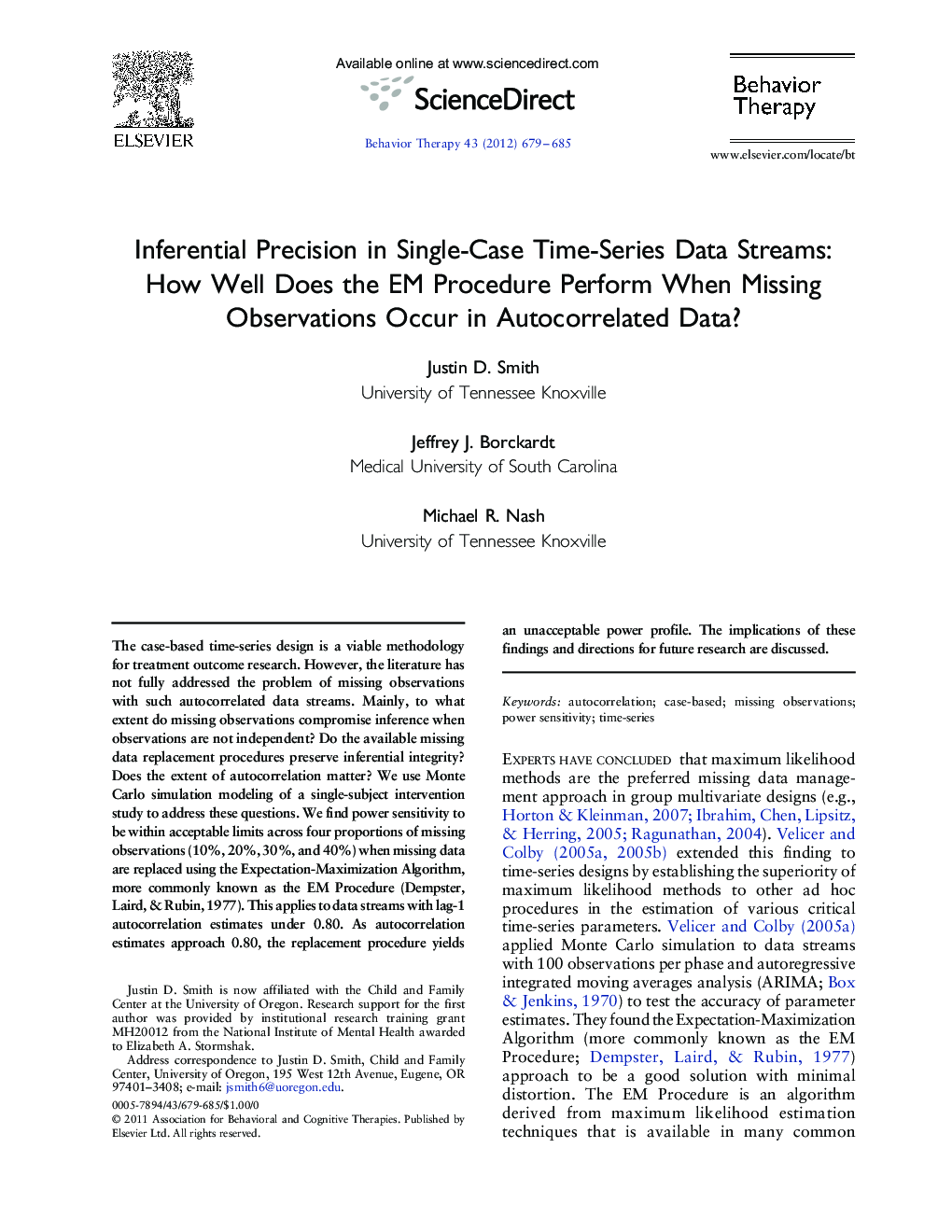| Article ID | Journal | Published Year | Pages | File Type |
|---|---|---|---|---|
| 901373 | Behavior Therapy | 2012 | 7 Pages |
The case-based time-series design is a viable methodology for treatment outcome research. However, the literature has not fully addressed the problem of missing observations with such autocorrelated data streams. Mainly, to what extent do missing observations compromise inference when observations are not independent? Do the available missing data replacement procedures preserve inferential integrity? Does the extent of autocorrelation matter? We use Monte Carlo simulation modeling of a single-subject intervention study to address these questions. We find power sensitivity to be within acceptable limits across four proportions of missing observations (10%, 20%, 30%, and 40%) when missing data are replaced using the Expectation-Maximization Algorithm, more commonly known as the EM Procedure (Dempster, Laird, & Rubin, 1977). This applies to data streams with lag-1 autocorrelation estimates under 0.80. As autocorrelation estimates approach 0.80, the replacement procedure yields an unacceptable power profile. The implications of these findings and directions for future research are discussed.
► We examined the relationship between missing data, autocorrelation and inferential precision. ► The time-series simulation was modeled after a single-case 8-week intervention with a 10-day baseline. ► Power sensitivity was acceptable across four missing value proportions using the EM Procedure with autocorrelation ≤ 0.80. ► As autocorrelation approached 0.80, power profiles were unacceptable, regardless of the proportion of missing observations.
